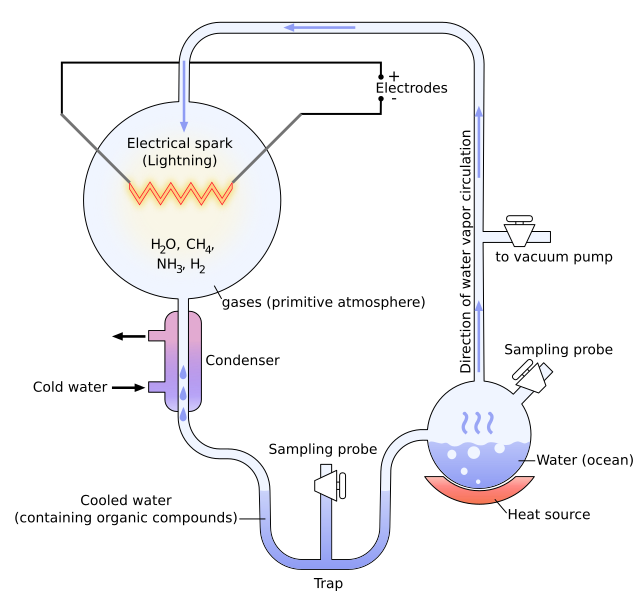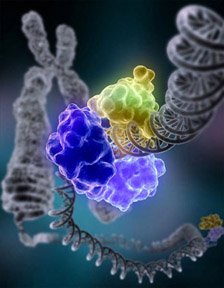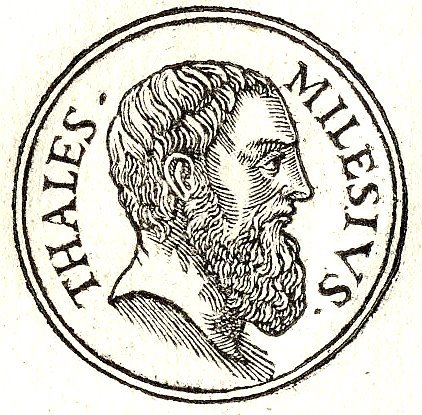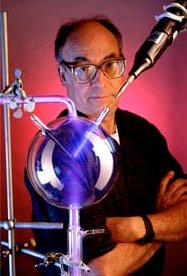The origin of life has been the greatest myth of the universe. Life being the mystery behind every living creature regardless its identity or personality, has been a very hard nut to crack when it comes to defining it, and locating its origin. Life might sound simple but it goes a long way differentiating the living from the non-living. But how does the living acquire this distinct quality? This is a question that has cost many philosophers and scientist their lifetime trying to puzzle out. So let’s see how science has been able to explain the phenomenon behind Life.
Early Belief
The story of how the world comes to form or how life first existed on it is as diverse as the number of cultures of the world. Almost every culture has a way of defining their origin. But something common among these stories is a belief that all creations are made by a magnificent supreme being. They believe the earth and all that is in it were created by a celestial mighty being, “god”.
This was even strengthened by the western theological belief according to the biblical record of creation. The first book of the bible (Genesis) recorded that the earth and everything on or in it was created by Almighty God over a period of six days. For many years , The majority of the communities of the world held on to this mythological belief until the middle of the nineteenth century, when it becomes clear that living organisms are subjected to the same physical and chemical laws just as non-living things. Does that mean they have the same origin as the non living things?
Basics of Life
As popularly defined, Life or living system is any system that posses the ability to metabolize; eat, breath, sense, grow, excrete, reproduce and die.
Preceding Theories
Dating back to the ancient Greek, a trend of successive philosophers has questioned the belief behind the emergence of the physical world. They diverge from the preliminary mythological knowledge and focused on practical knowledge in making philosophical assumption. These philosophers viewed the concept of origin of life from two perspectives; the monistic and the pluralistic view. The monists assumed that the origin of the world is from a single substance while pluralists held to the belief that creation would have been from a mixture that exhibit random motion and having its particles collide, bind and separate thereby forming life by "Chance". The Greek philosopher “Thales of Miletus” was the first to give a pure natural explanation of the origin of the world independent of mythological abstract. He assumed that life had emerged from water.
Early Hypothesis : Oparin-Haldane Soup Theory
The basic and fundamental theory of the origin of life was proposed by two scientists; Russian chemist Alexander I. Oparin and British scientist John B. Haldane in the 1920s.
According to this hypothesis, John D. Bernal, an Irish scientist, summarizes the process of biosynthesis (origin of life) in 1949 in three stages;
- Origin of biological monomers
- Origin of biological polymers
- Evolution from molecules of cells
The hypothesis of “Soup Theory” stated by Oparin and Haldane was supported by an experiment by Stanley L. Miller and Harold C. Urey in 1952 to demonstrate how organic molecules are formed from primordial inorganic ingredients.
Millar-Urey experiment
Being that the Oparin-Haldane’s hypothesis was widely accepted , it served as a framework from other succeeding research.

licence: CC-BY-SA Source: wikimedia
Further Experiments and Modifications
The Urey-Miller experiment is regarded as the classic experiment in investigating the origin of life. Although the experiment vividly support the Oparin hypothesis but did not end the journey, on the contrary, it serves as a poke for new ideas and experiments. Recent investigation and experiments have created rooms for ideas, hypothesis and discoveries that get the story more complicated.
- Examination of the extract from miller’s experiment with advanced analytical procedures showed more amino-acids than was initially discovered by miller.
- Wolman N. MacNevin (at the Ohio University) discovered biochemicals relating to earth’s early primordial molecules while performing an experiment similar to that of miller (although he did this independent or ignorant of any theory of evolution). He was passing 100000 volt spark through methane and water vapour.
- Experiment performed by Jeffrey Bada- adding iron and carbonate minerals to the initial ingredients of the miller’s experiment. The products were very rich in amino acids. This suggest that the early atmosphere might contain carbondioxide and Nitrogen.
- In 1961, Joan Oro discovered that RNA and DNA nucleobases as well as amino acids could be obtained through simulated prebiotic chemistry with a reducing atmosphere. This suggest RNA world hypothesis which proposed that RNA being able to serve as a gene carrier and enzyme could have been the basis of pre-cellular life.
Based on these subsequent experiments it is very clear that there is no difficulty in synthesizing or forming the molecules that are necessary for life from their inorganic precursors. However J.D. Bernal concluded that “It is not enough to explain the formation of such molecules, what is necessary is a physical chemical explanation of the origin of these molecules that suggest the presence of suitable sources that sinks for free energy.
Conclusion
Many scientist have spent their lifetime trying to unravel the principle behind the phenomenon that bridge between the non-living molecules and the living organism. Yet no one has been able to obtain the characteristic called Life by combining these elementary molecules.
References:
- Abiogenesis: https://en.wikipedia.org/wiki/Abiogenesis
- Definition of Life: https://www.britannica.com/science/life
- Ingredients of Life: https://www.livescience.com/32983-what-are-ingredients-life.html
- Basic Molecules of Life: https://basicbiology.net/biology-101/molecules-of-life/
- Oparin-Haldane Hypothesis: https://en.wikibooks.org/wiki/Structural_Biochemistry/The_Oparin-Haldane_Hypothesis
- Miller-Urey Experiment: https://en.wikipedia.org/wiki/Miller%E2%80%93Urey_experiment
- Oparin-Haldane Hypothesis: https://en.wikibooks.org/wiki/Structural_Biochemistry/The_Oparin-Haldane_Hypothesis
Referential source links for this article are included for further reading and all illustrative Images are credited to their various sources. Thank you.
Best Regards!!





You give a very good summary of historical experiment. But the conclusion isn't necessarily true. In 2012 Siguwara's lab created first protocell with synthetic DNA that replicated based on signals provided by them. However, the limitation was that it only did that for one generation. Following this I'm 2015 the same group published in nat comm, in which, they upgraded their method by which they can supply new materials to the proto-cell by fusing it with material carrying lipid particles. After getting new materials from these delivery vesicles they were able to replicate the proto-cell for upto 3 generations. See this figure here.
Now this is a minimalistic system, because they had to provide the replication enzyme (sybr green you see in the figure) externally. Now they slowly need to add one component at a time to make these particles capable of not only replicating themselves but rather being capable of making molecules and enzymes within themselves as well.
On the other hand attempt at creating artificial life also includes reverse engineering. Where people take already living cell and then find the minimal components required by it to thrive. Like in 2016 they published some 400-500 minimal genes that were required to keep the bacteria alive. That is they took genome from one organism cut it down to minimum and inserted it into another genome deprived organism and kept it live and kicking.
I think the progress is going at good pace here from both directions.
hi @scienceblocks,
thanks for the contribution... you did a great job!!
As regards to my conclusion: it is very true that a protocell has been created, but a protocell is just a precursor for a true biological cell. although protocells have been achieved to possess the characteristics of growth and replication but none has yet attain the criteria to be declared a typical cell (a living cell).
kindly check out this article: source; ncbi
I think I'm still correct concluding that way- or what is your say about this?
I agree, You are correct that it can't be classified as living, because it can't self-sustain. I was trying to point that efforts of researchers in combining macromolecules has not been fruitless. They have created artificial systems with minimalistic criteria or what you call a prototype for life. But yes it would be more exciting to see an artificial self sustaining cell in action. Now reverse engineered cells may fit the bill, but even I don't like the fact that, they aren't artificial enough. I think this is a very interesting topic you have opened.
This post has been voted on by the steemstem curation team and voting trail.
There is more to SteemSTEM than just writing posts, check here for some more tips on being a community member. You can also join our discord here to get to know the rest of the community!
Hi @okunlolayk!
Your post was upvoted by utopian.io in cooperation with steemstem - supporting knowledge, innovation and technological advancement on the Steem Blockchain.
Contribute to Open Source with utopian.io
Learn how to contribute on our website and join the new open source economy.
Want to chat? Join the Utopian Community on Discord https://discord.gg/h52nFrV